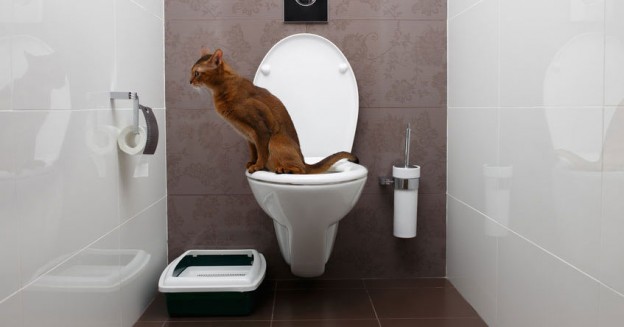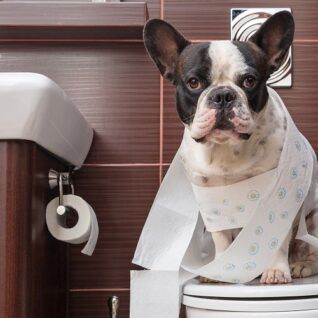We've stumbled upon this post on Why you should never flush dog poop down the toilet down the page on the internet and believe it made perfect sense to talk about it with you on this site.

When it comes to getting rid of waste, specifically animal waste, many people commonly turn to the hassle-free option of flushing it down the commode. Nevertheless, this seemingly very easy solution can have serious effects for the environment and public health. In this write-up, we'll discover why flushing animal waste down the bathroom is a negative concept and provide different techniques for proper disposal.
Intro
Proper waste disposal is essential for maintaining ecological sustainability and public health. While it might appear harmless to purge animal waste down the bathroom, it can result in various concerns, both for the setting and human health.
Risks of flushing pet waste
Ecological effect
Flushing pet waste introduces hazardous microorganisms and pathogens into rivers, which can negatively affect aquatic environments. These microorganisms can infect water sources and harm aquatic life, interrupting delicate ecosystems.
Public health worries
Animal waste includes dangerous microorganisms such as E. coli and Salmonella, which can present serious wellness dangers to humans. Flushing pet waste down the commode can pollute water materials, leading to the spread of conditions and infections.
Alternatives to flushing
Instead of purging animal waste down the commode, there are numerous alternate disposal approaches that are extra environmentally friendly and hygienic.
Composting
Composting pet waste is a green method to deal with it. By composting, raw material is broken down right into nutrient-rich soil, which can be utilized to feed gardens and plants.
Landfill disposal
Disposing of animal waste in a land fill is one more choice. While not as eco-friendly as composting, it is a more secure alternative to flushing, as it stops the contamination of water resources.
Family pet garbage disposal systems
There are specific family pet garbage disposal systems offered that safely and hygienically get rid of animal waste. These systems commonly use enzymes to break down waste and eliminate odors.
Steps to appropriate pet waste disposal
To make sure proper disposal of animal waste, follow these steps:
Scooping and landing waste
Regularly scoop and bag animal waste using eco-friendly bags. This protects against waste from polluting the environment.
Making use of designated waste containers
Dispose of bagged animal waste in marked waste bins, such as garden compost bins or garbage dump bins. Prevent flushing it down the commode whatsoever expenses.
Cleansing can and pet areas on a regular basis
Regularly tidy litter boxes and family pet locations to stop the buildup of waste and bacteria. Usage pet-safe cleaning items to maintain health.
Advantages of appropriate disposal techniques
Embracing appropriate disposal approaches for animal waste offers several advantages:
Reduced environmental pollution
Correct disposal methods minimize the risk of environmental pollution, securing rivers and communities from contamination
Minimized danger of water contamination.
By staying clear of flushing pet waste down the bathroom, the threat of water contamination is considerably reduced, protecting public health.
Enhanced hygiene and hygiene
Appropriate disposal techniques advertise much better hygiene and hygiene, producing a safer atmosphere for both humans and pets.
Final thought
Finally, purging pet waste down the commode is hazardous to the setting and public health. By adopting different disposal approaches and adhering to proper waste administration techniques, we can decrease the unfavorable effect of pet waste and contribute to a cleaner, healthier planet.
Why You Should Never Flush Animal Waste Down the Toilet
As a pet and property owner, cleaning up after your furry friends is important to ensure your property is clean and disinfected. However, when disposing of animal waste, many opt to flush it down the toilet. After all, it seems like the most convenient option, right? Unfortunately, this common practice can actually have harmful effects on your plumbing system and the environment.
What Comprises Animal Waste?
Animal waste refers to bodily excretions such as feces and urine from pets such as cats, dogs, and rabbits. These excretions contain bacteria, pathogens, viruses, and parasites that can harm humans and the environment. Some types of animal waste, such as feces from dogs and cats fed on processed foods, may contain harmful bacteria like E.coli, salmonella, and campylobacter. Flushing this type of waste down the toilet could pollute waterways and destroy the ecosystem.
Environmental and Physical Dangers of Flushing Pet Waste
In the environment, flushing waste can contaminate waterways, killing aquatic life and harming the ecosystem. The waste that might be considered flushing down the toilet could also adversely impact your plumbing and sewage systems in the following ways.
End Up in Sewage Treatment Plants
Flushing pet waste down the toilet can have a detrimental impact on sewage treatment plants and the overall water quality. Pet waste contains harmful bacteria and pathogens that, if not properly treated, can contaminate water sources and pose a risk to aquatic life and human health. Sewage treatment plants are designed to handle human waste and other biodegradable materials, but they are not equipped to effectively treat the bacteria and pathogens present in pet waste.
Clog Pipes
- Density: Animal waste is often dense and easily gets stuck in pipes. Unlike human waste, which is designed to be flushed away smoothly, pet waste contains elements like grass, dirt, raw hide, hair, and other materials that can create blockages in the plumbing system.
- Potential damage: Flushing pet waste, even in small amounts over time, can lead to costly repairs. It can cause cracked pipes and other plumbing issues, resulting in the need for professional intervention.
- Public and private waste management systems: Flushed pet waste can also cause problems in public and private waste management systems. It can overload septic tanks and other sewage treatment systems, leading to backups.
Leading to Untreated Sewage Overflows
Flushing excessive amounts of pet waste can overwhelm the sewer system's capacity to handle the additional waste load. This can cause backups and overflows, leading to untreated sewage entering waterways.
Additionally, pet waste, particularly when combined with other non-biodegradable items like wipes or litter, can create sewer pipe blockages. These blockages prevent the proper flow of wastewater and can cause sewage to back up and overflow.
Flushing Pet Waste Could Affect Human Health
In addition to environmental hazards, flushing pet waste down the toilet could be detrimental to human health. The bacteria found in animal excrement exposed to sewage might cause infectious diseases. For that reason, people whose immune systems have been weakened by particular diseases, medical treatments, or age can be in danger of disease from even the smallest bacterial exposure in contaminated water.
Alternative Ways to Responsibly Disposing of Pet Waste
The most secure and sustainable way of disposing of pet waste is by composting it. Cat litter can be useful fertilizer for your garden if you compost it safely and appropriately. However, it is essential to do this correctly to prevent exposure to the dangerous parasites that the waste might have. It is best to research before composting your pet waste, as certain toxins can persist even after the composting process is finished.
Another safe way to dispose of pet waste is by bagging and throwing it in the trash bin. Here, it is crucial to choose the appropriate bag for disposal, such as biodegradable bags that quickly decompose, reducing the carbon footprint of landfills.

As a reader about Can You Flush Dog and Cat Poo Down the Toilet?, I think sharing that piece was really helpful. In case you enjoyed reading our post if you please make sure you remember to pass it around. Thank you so much for your time invested reading it.
Click Here
Comments on “My Relevance of Not Flushing Animal Waste Down the Toilet”